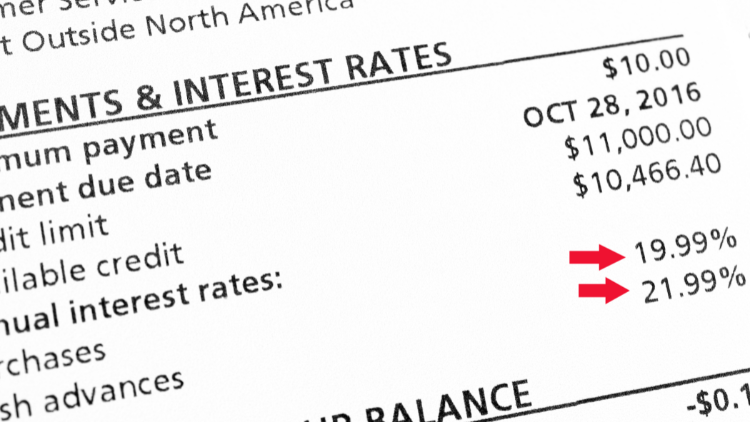When it comes to credit card costs, the annual fee gets all the attention. It’s the headline act, the number everyone looks for.
But lurking in the fine print are a host of other charges—the backup singers of the fee world—that can quietly drain your wallet if you’re not paying attention.

These fees aren’t always “hidden,” but they are often overlooked. Understanding what they are and how they work is the key to using your credit card to its full potential without ever paying an unnecessary cent.
Here is your no-nonsense guide to seven of these fees and the simple playbook for dodging every single one of them.
1. The Late Payment Fee
This is the most common fee in the book, but its true cost is more than just the initial charge (which can be up to $41).
- What It Is: A penalty charged if you fail to pay at least the minimum amount due by your payment deadline.
- How to Dodge It: This one is non-negotiable. Set up autopay from your bank account the day you get your card. At a bare minimum, set it to pay the “minimum payment due.” This ensures you will never be late. Even better, set it to pay the “full statement balance” to avoid both late fees and interest charges.
2. The Foreign Transaction Fee
This fee is a silent travel partner you never wanted, taking a cut of every purchase you make abroad.
- What It Is: A surcharge, typically 2% to 3% of the purchase amount, added to any transaction that passes through a foreign bank. This includes buying souvenirs in another country, but can also include online purchases from a foreign-based company.
- How to Dodge It: Before you travel internationally or buy from an overseas website, check your card’s terms. If it has this fee, leave it at home. Get a travel-friendly card that specifically advertises “$0 foreign transaction fees.” Most travel-focused and many cash-back cards now offer this perk.
3. The Cash Advance Fee
This is arguably the most expensive and dangerous fee a credit card has.
- What It Is: A fee for using your credit card to get cash, typically from an ATM. It’s usually a minimum flat fee ($10) or a high percentage (5%) of the amount withdrawn, whichever is greater. To make matters worse, the APR on cash advances is much higher than your purchase APR, and interest begins accruing the moment you take out the cash—there is no grace period.
- How to Dodge It: Simple: Never, ever use your credit card at an ATM. Treat it as a payment tool, not a source of cash. In a true, dire emergency, it’s an option, but it should be avoided at all other costs.

4. The Balance Transfer Fee
The 0% intro APR on a balance transfer can be a great tool for paying off debt, but the transfer itself isn’t always free.
- What It Is: A fee charged for moving a balance from one credit card to another, calculated as a percentage of the amount transferred (usually 3% to 5%).
- How to Dodge It: You can’t always dodge it, but you can manage it. Do the math before you commit. Calculate the upfront fee (e.g., 3% of $5,000 is $150) and compare it to the interest you would pay without transferring. If the interest savings are far greater than the fee, it’s a smart move.
5. The Returned Payment Fee
This is a penalty for a payment that doesn’t go through.
- What It Is: A fee charged by your credit card company if the payment you sent them (for example, from your checking account) bounces due to insufficient funds. This is in addition to any overdraft fee your bank might charge you.
- How to Dodge It: Keep track of your checking account balance. A good habit is to ensure your checking account has a buffer that is always greater than your typical credit card payment.
6. The Over-the-Limit Fee
Thanks to the CARD Act of 2009, this fee is now optional, but it’s a choice you should always decline.
- What It Is: A fee charged if your balance exceeds your credit limit. You now have to “opt-in” to over-limit protection for your transactions to be approved.
- How to Dodge It: When your card issuer asks if you want to opt-in to over-limit protection, just say no. If you don’t opt-in, any transaction that would push you over your limit will simply be declined, saving you from the fee.
7. The Authorized User Fee
Thinking of adding your spouse or child to your premium travel card? Check the terms first.

- What It Is: A fee charged by some premium and high-end cards for adding an additional person to your account. This can range from $50 to $195 per person, per year.
- How to Dodge It: First, know that most no-annual-fee cards do not charge this. For premium cards, review the benefits an authorized user gets. Sometimes the perks (like their own lounge access) can be worth the fee. If not, consider a different card for your family member.
WalletAware Wisdom: Your Best Defense
The single most powerful tool you have against fees is knowledge. By law, every credit card offer must include a clear, easy-to-read table of these costs. This is often called the Schumer Box. Always take 30 seconds to review this box before you apply for any card.
By knowing the rules of the game, you can use your credit cards to their full potential without ever paying a cent more than you have to.
Frequently Asked Questions (FAQ)
Can I get a fee waived if I’m charged? Sometimes! If you have a good history with the bank, it never hurts to call customer service and politely ask for a one-time waiver, especially for a first-time late fee. The worst they can say is no.

What is a “Penalty APR”? A Penalty APR is a very high interest rate (often 29.99% or more) that issuers can apply to your entire balance if you make a late payment. According to the Federal Trade Commission (FTC), if triggered, it can be very costly and may last for at least six months. Autopay is your best defense.
WalletAware shares education, not individualized financial advice. Always confirm current terms on the issuer’s site before applying.